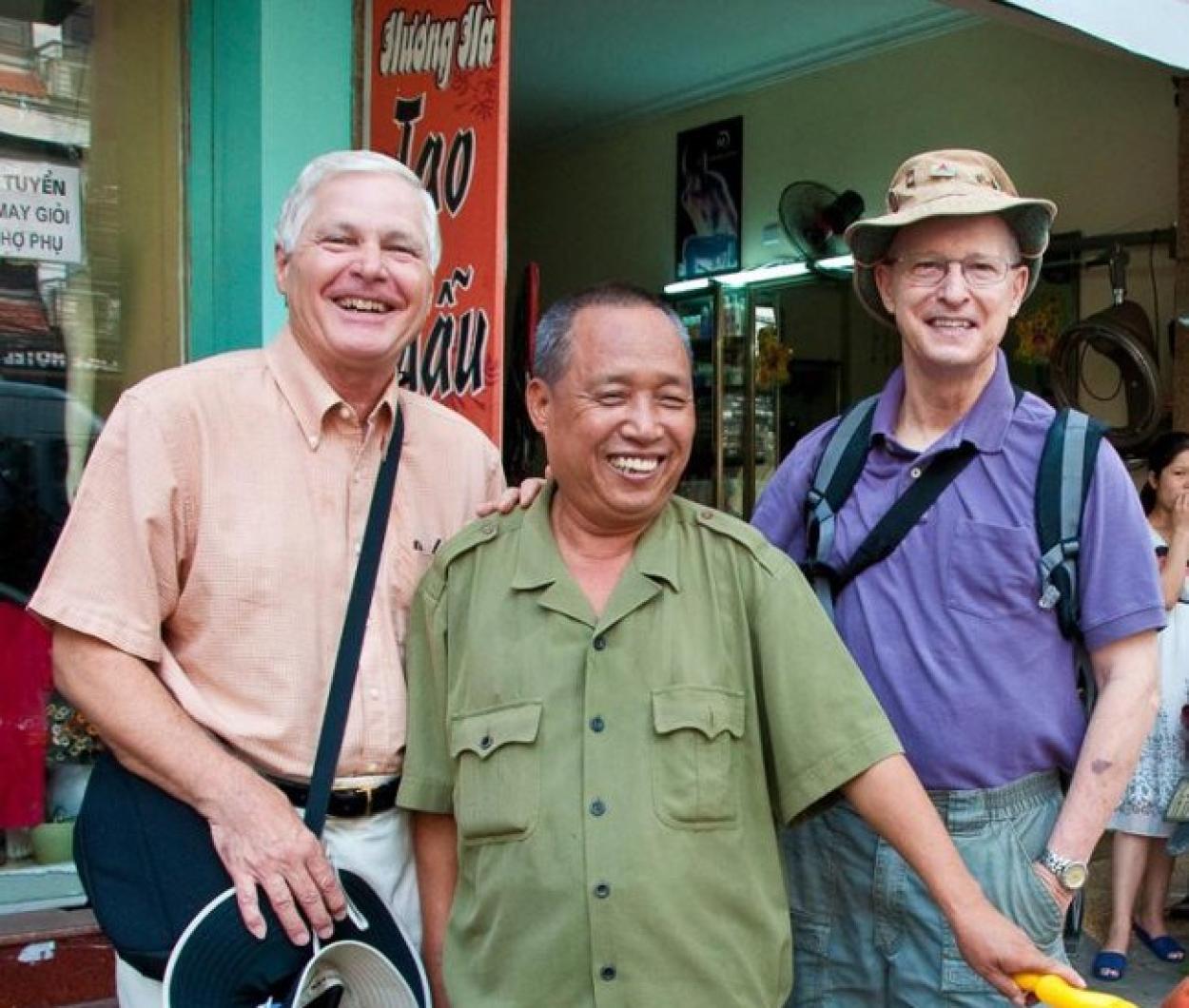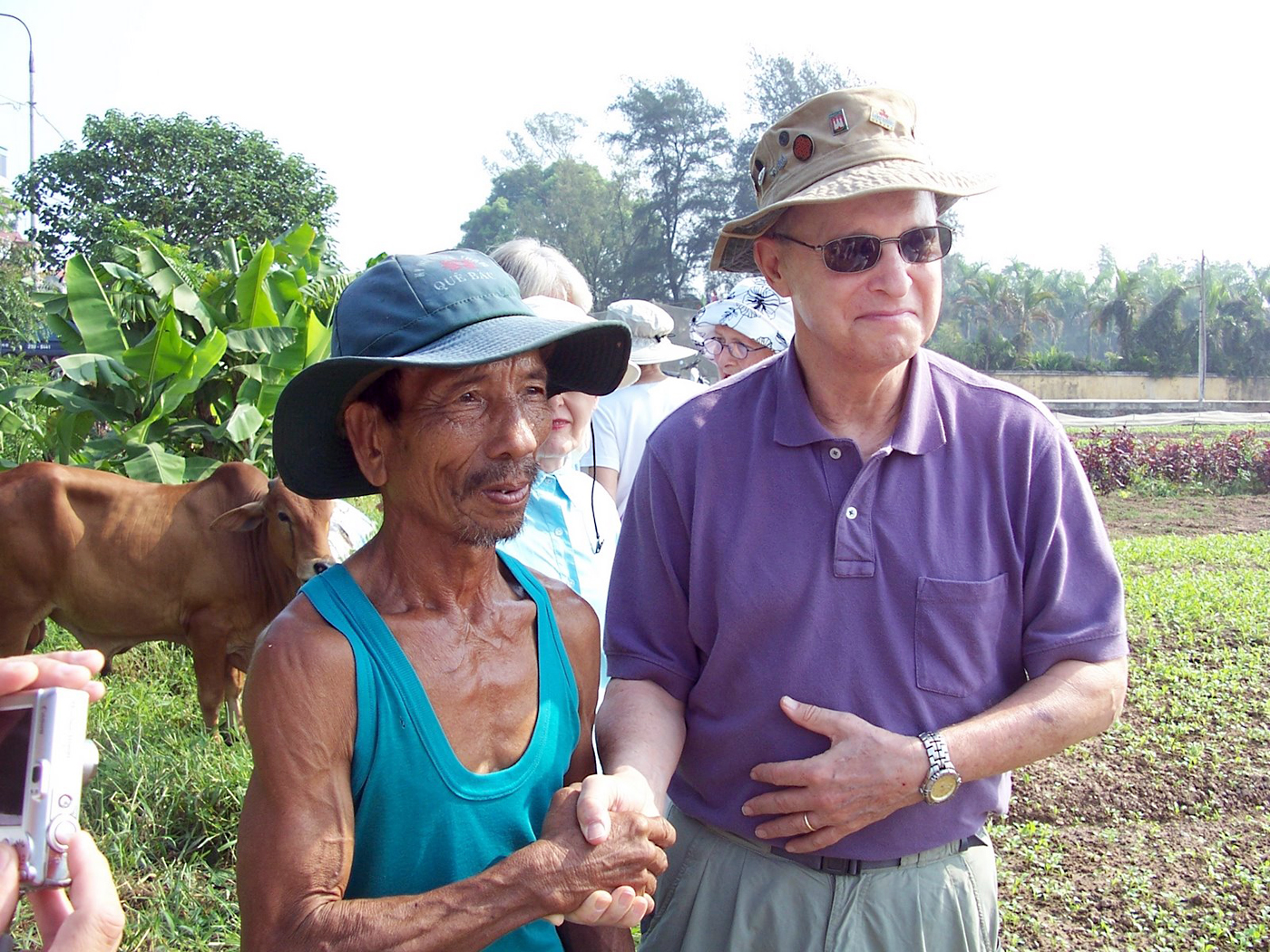With Memorial Day approaching, I am recalling a visit to Viet Nam last fall on which two U.S. Navy veterans of the war in Viet Nam were among my companions. As we visited city and countryside, we met Vietnamese veterans on street corners and in rice fields. Amazingly, bygones seemed to be bygones among veterans on both sides. Though the war is keenly remembered — particularly by those who have been affected by the Agent Orange that we dropped in the war — stoic acceptance appeared to be the norm. A hobbling guide to a temple in Ho Chi Minh City (Saigon), who had been crippled by the Agent Orange his mother had absorbed when he was in her womb, simply said that war is war, isn’t it? Some of this acceptance, we were told, is because much of the population calls itself Buddhist, and Buddhism is a religion of acceptance. But much of it, too, is a traditional way of letting go of the past in a country that has been under attack or occupation for centuries — by Chinese, French, Japanese and Russians, as well as Americans.
The first Viet Cong veteran we met was an elderly man deftly steering his grandson in a kiddy cart around breakfast noodle soup diners who were squatting on a Hanoi sidewalk. Through an interpreter, the Viet Cong veteran proudly told the American veterans that he had been a member of the group that had liberated South Viet Nam in 1975 so it could be reunited with the Communist north. Then he added that he was pleased to meet combatants from the other side. “After all, that war is over a long time now,” he said. Soon the three smiling veterans had flung their arms over each other’s shoulders and were having pictures taken.
Harvesting rice with his water buffalo in a brown-gold rice field outside Hanoi was another veteran — a 70-year-old former lieutenant colonel. Introduced to the U.S. Navy veterans, he smiled warmly and in pidgin English greeted them with: “Army, then. Friends now.”
In the war, he said, “I really hated U.S. soldiers, but now we are friends.”
It seemed extraordinary that this Vietnamese working his water buffalo in a rice field said that he had heard that finally, after 42 years, former Lieut. William L. Calley Jr., convicted in the 1968 massacre at the village of My Lai, had apologized for his actions. (Mr. Calley, who was sentenced to life in prison, but served only three years under house arrest and a short time at Fort Leavenworth, always said he was simply following orders. In the massacre, 504 Vietnamese were killed, including 185 women and 173 children.)
The Vietnamese farmer said he was pleased that, at last, Mr. Calley had apologized. Then he shook hands warmly with the U.S. veterans before returning to his water buffalo and his harvesting, urging the veterans, as he waved goodbye, to enjoy their Vietnamese visit this time.
Also welcoming the veterans was an 80-year-old war widow roofing her house with palm fronds in a village in the north of Viet Nam. She wanted them to come inside to see the pictures of her brother and husband — both killed in the war — that stood before the Buddhist shrine in her living-dining-bedroom. She proudly pointed out the government commendation they had received posthumously.
The LSTs on which the Navy men had served had put soldiers ashore all along the coast in South Viet Nam. As we toured Nha Trang and Da Nang, the Navy veterans remembered enjoying the long stretch of the Da Nang beach and visiting the city. “It was a sleepy colonial city then,” one remarked, adding that he was encouraged by what the Vietnamese have managed to do since the war days. ”Now Da Nang is an inviting commercial city,” he said. And he also remembered how his rescue and salvage ship had managed to pull the Oklahoma City, flagship of the Seventh Fleet, off a sandbar at China Beach near Da Nang.
In the War Remnants Museum in Ho Chi Minh City, the war was vividly brought back to the Navy veterans. Formerly known as the Museum of American War Crimes, its exhibits are largely photographs of Vietnamese villagers fleeing U.S. bombs and of fields and jungles denuded of leaves by U.S.-dropped chemicals. But there are also displays of the weapons of the armies of both sides. As he studied a Vietnamese grenade in a display case, one of the Navy veterans remembered how one just like it had been fired at his LST and landed at his feet but failed to go off.
In Hanoi, in the tiny cells of the so-called Hanoi Hilton, the former 19th-century French prison where U.S. pilots (including Sen. John McCain) were held, the American veterans shook their heads over photographs of those former inmates.
Both Navy veterans said they are glad to have returned to today’s Viet Nam, however. One remarked that when he went to war he was a college student reared on precepts of American valor in World War II in which his father’s generation had fought.
“When the Viet Nam War began, it was just natural that I should go into NROTC and then to war. After all, I was a patriotic midwestern American. Happily, I never had to go face to face with any of those guys in the jungle. My ship was shot at, but I don’t have any scars from that war. In those days, of course, I didn’t know anything much about Viet Nam. I was told our objective was to keep all Southeast Asia from going communist by fighting the North Vietnamese. I didn’t realize that we were attacking an ancient, historic civilization. Coming back has made me see that. This is a beautiful country and the Vietnamese are beautiful people. The Vietnamese soldiers of both north and south did their duty and we did ours. For all of us, it’s over now. It’s as simple as that.”
Although the veterans with whom I was traveling had returned independently to Viet Nam, a sizable number of U.S. veterans return each year, we were told, with Tours of Peace (TOP) Viet Nam Veterans, a tour group based in Tucson, Arizona that specializes in making person-to-person contacts between the veterans of both sides. Virtually all return tentatively. Many break down as they revisit scenes of combat, but in the end, sharing experiences with the enemies of yesterday seems to be a restorative experience.
As Memorial Day nears, of course, we are remembering those who have died not only in Viet Nam and Iraq and today’s war in Afghanistan, but in all our wars.
Since my visit to Viet Nam, I have been in Tunisia, at the North Africa American Cemetery and Memorial outside Tunis. There, 2,841 who were killed in the North African campaign in World War II rest beneath white crosses or Stars of David. or in the unmarked graves of the unknown. In that combat, our troops were broadly supported, of course. But on Monday, all of our men and women who have answered their country’s call to arms, whether in popular or unpopular conflicts, are being heralded and deeply missed.








Comments
Comment policy »